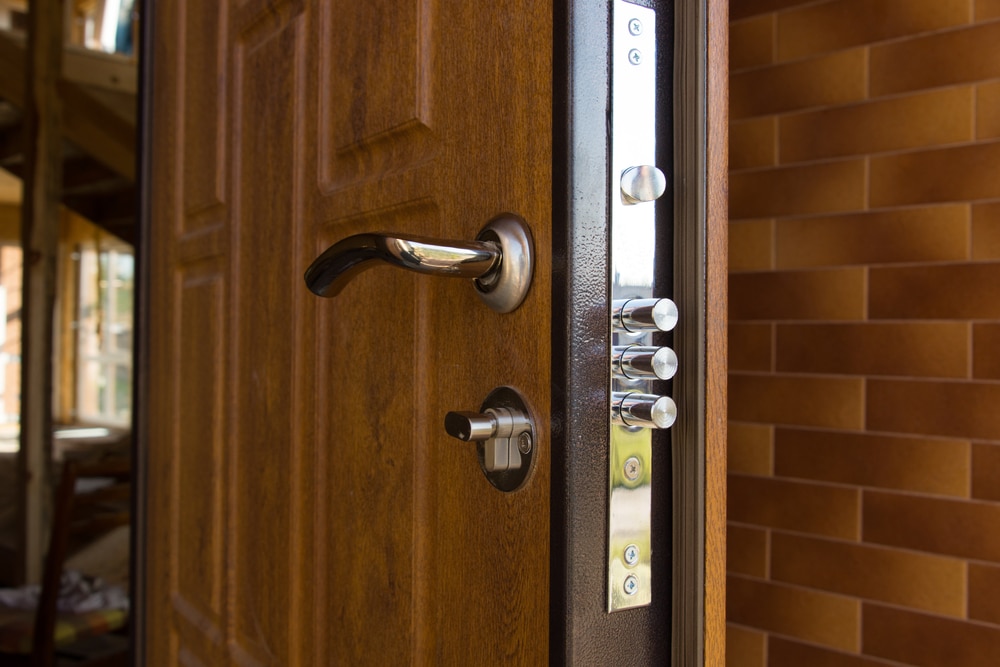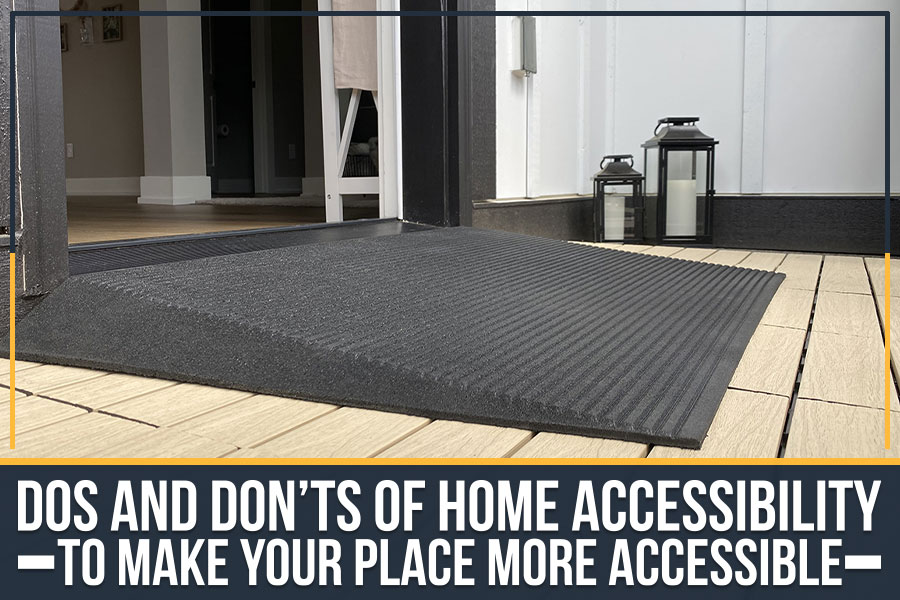Achieving that same comfort level can be a daily challenge for many individuals with varying mobility needs. According to research, 46% of Americans aged 75 or over report having a disability and are at risk of falls and accidents at home.
That’s why home accessibility and proper home modifications are so crucial. It’s not just about convenience; it’s about empowering individuals to live independently and comfortably within their own spaces.
At Safe Home Pro, we ensure that home accessibility is not a distant dream but a practical and realistic solution that transforms lives. Our mobility solutions are designed to ensure older adults can age at home comfortably without worrying about adjusting to alien conditions.
So, if you’ve planned home modifications to improve accessibility, this blog lists some dos and don’ts that you must remember.
Don’t Overlook Safety Concerns
While striving for home accessibility, avoiding common pitfalls that might compromise safety is essential. Here are some “don’ts” to keep in mind:
1. Don’t Neglect Clear Pathways: One of the most common mistakes is failing to maintain clear, unobstructed pathways throughout your home. Ensure that hallways, entrances, and corridors are free from clutter, loose rugs, or protruding objects that could become tripping hazards.
2. Don’t Ignore Proper Lighting: Poor lighting can pose a significant safety risk. Avoid dimly lit areas, especially around staircases, entrances, and hallways. Use bright, energy-efficient lighting fixtures to enhance visibility and reduce the risk of accidents.
3. Don’t Rush with Renovations: Home modifications for accessibility should be carefully planned and executed. Rushing through renovations can lead to mistakes and unsatisfactory results. Take the time to research, consult experts, and create a detailed plan before making any modifications.
4. Don’t Skip Permits and Regulations: Depending on your location, specific building codes and regulations may apply to home modifications. Neglecting permits and compliance with these rules can result in legal issues and potential safety hazards. Always check with local authorities and ensure your modifications meet the necessary standards.
5. Don’t Make Assumptions: Everyone’s accessibility needs are unique. Avoid making assumptions about what modifications are required. Consult with a professional or occupational therapist specializing in home accessibility to create a personalized plan tailored to the specific needs of the individual.
6. Don’t Neglect Maintenance: Once home modifications are in place, remember to maintain them regularly. Neglected modifications can deteriorate over time, becoming less effective and potentially hazardous. Regular inspections and maintenance will ensure that your home remains safe and accessible.
7. Don’t Overlook Emergency Preparedness: In an emergency, having a plan that considers accessibility is crucial. Ensure that escape routes are accessible for all occupants, including those with mobility challenges. Remember to test emergency alert systems and have a communication plan in place.
Also Read – Boost Independence: The Benefits Of Grab Bars In Bathrooms
Home Modifications Dos that Will Make Your Place More Accessible
1. Thoughtful Furniture Placement: Rearrange your furniture to create spacious, unobstructed pathways, especially for individuals using wheelchairs or walkers. Aim for a 5-foot turn radius, allowing free movement without encountering obstacles. Maintain at least a 2-foot-wide path between furniture pieces, a standard parameter recommended for accessibility. Additionally, check ADA guidelines for spaces with fixed furniture to ensure compliance.
2. Install Accessible Ramps: Enhance accessibility by replacing steps with ramps. Ramps offer immediate accessibility benefits. Various types of ramps are available to suit your needs:
- Threshold Ramps: Ideal for addressing uneven flooring between indoor and outdoor spaces, bridging elevation differences up to 6 inches.
- Portable/Folding Ramps: Provide flexibility without permanent installation, available in bi-fold or tri-fold options for easy portability.
- Suitcase Ramps: Fold up like a suitcase, offering lightweight and travel-friendly solutions.
- Permanent Ramps: Commonly made of metal or wood, these ramps are customizable for long-term use but may require permits and professional installation.
- Modular Ramps: These ramps come in customizable parts and often do not require professional installation. Explore the options that suit your accessibility needs and budget.
3. Handrails and Grab Bars: Enhance safety and ease of movement in critical areas of your home by installing handrails and grab bars. Consider locations such as the kitchen, bedrooms, and bathrooms. Check local building requirements and permits to ensure compliance. Generally, grab bars should be as high as needed, but following ADA guidelines, a rule of thumb is to position them off the ground, including in bathrooms and showers.
4. Hazards-Free Flooring: Create a smooth and secure flooring experience by removing any rugs or liners that could pose obstacles for wheelchair or walker users. If you desire rugs or carpets in your home, opt for very low-pile rugs securely attached to the subflooring using non-interfering rug tape. Alternatively, consult a local flooring installer to craft a custom solution that allows a rug to integrate seamlessly into the flooring. Prioritize low-slip flooring options such as vinyl or laminate for maximum safety.

5. Lever Handles for Doors: Simplify room access by replacing traditional doorknobs with lever handles, also known as French door handles. Lever handles are especially beneficial for individuals with grip challenges. Consider replacing all doorknobs, including entryway and bathroom doors.
6. Kitchen Accessibility: The kitchen can be one of the least accessible areas in a home due to features like built-in appliances, high countertops, and vertical shelving. To improve accessibility:
- Move everyday items to lower cabinets for easy access.
- Reconfigure appliances near the sink with the assistance of a general contractor to simplify tasks.
Consider purchasing ADA-compliant appliances, such as dishwashers, ranges, wall ovens, and lower countertops. For instance, replace an above-counter microwave with a microwave drawer or a shelf below the countertop.
7. Lower Closet Rods: Lower closet rods to 3 feet off the ground to ensure easy reach, particularly for individuals in wheelchairs. Additionally, consider configuring the closet layout to incorporate low-profile dressers, making accessing clothing items like underwear, socks, and pants easier.
8. Bathroom Safety: Bathrooms can be particularly hazardous for individuals with disabilities:
- Ensure ample space for safe turning and maneuvering within the bathroom. Generally, an ADA-compliant bathroom should be a minimum of 60 inches wide by 56 inches deep, with additional clearance space for bathroom fixtures.
- Confirm that your bathroom meets the minimum ADA requirements, including a wide enough entry door to accommodate a wheelchair, which typically requires a doorway of at least 42 inches in width.
- Enhance safety by installing safety bars, a bench for sitting, and position poles to aid movement.
- Consider using non-slip bathroom tile materials like ceramic, porcelain, or cement.
9. Stairlifts & Portable Ramps: Finally, adding stairlifts & portable ramps can make your place more accessible for older adults. You can get a stairlift customized to your needs at Safe Home Pro.
Professional Home Accessibility Experts
If you’re looking for better home accessibility options, contact Safe Home Pro’s experts for personalized guidance. Contact us for detailed insights on modifying your home for people with limited mobility.


